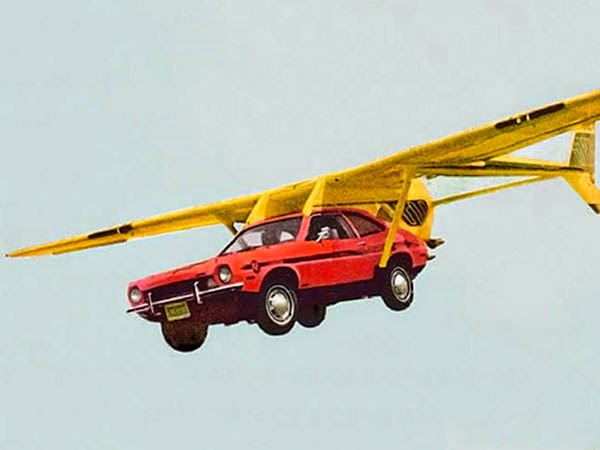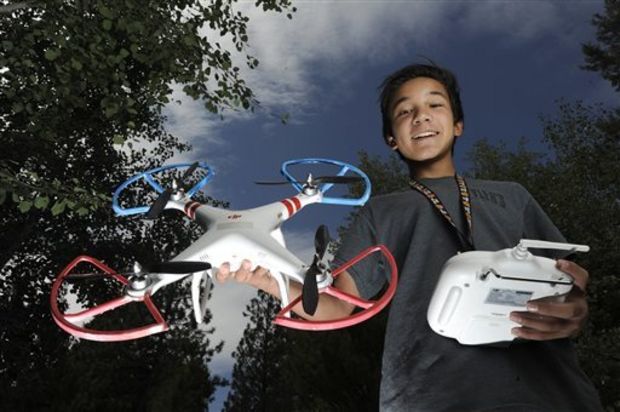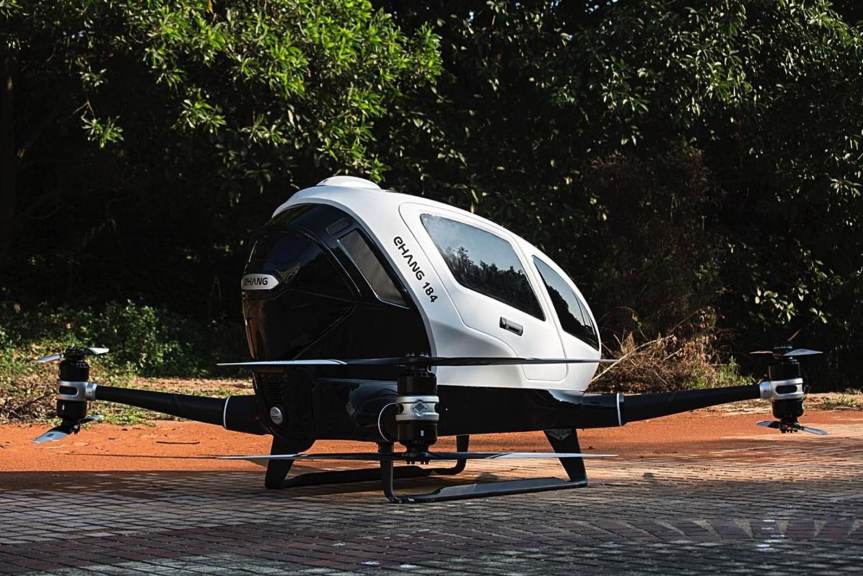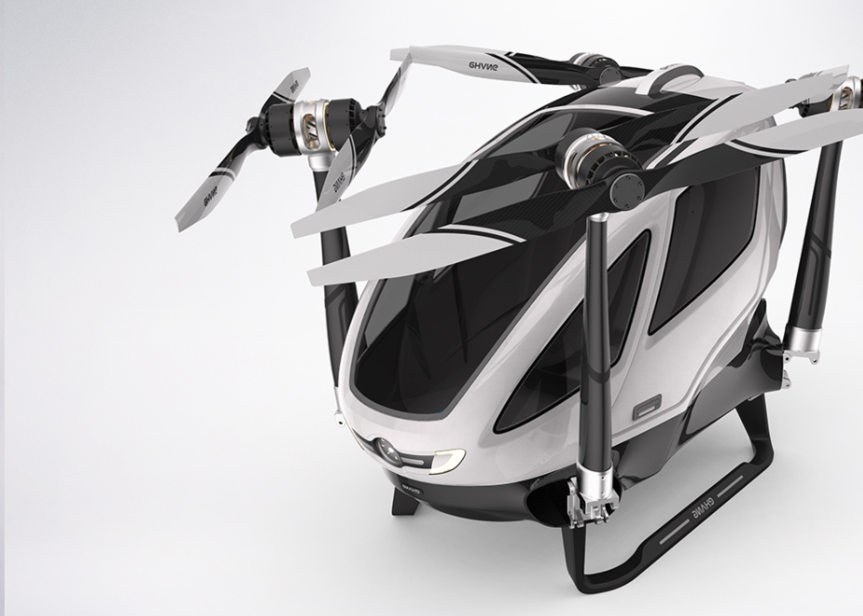Whenever a futurist talks about the future and lays out all the dazzling wealth technological advancements hold in store for us, there is one question that is always asked by the audience.
“Where is that flying car you promised me?”
Well, we may be drawing near to a future of flying cars. While the road to that future may still be long and arduous, I’m willing to forecast that in twenty years from now we will have flying cars for use by civilians – but only if three technological and societal conditions will be fulfilled by that time.
In order to understand these conditions, let us first examine briefly the history of flying cars, and understand the reasons behind their absence in the present.
Flying Cars from the Past
Surprising as it may be, the concept of flying cars has been around far longer than the Back to the Future trilogy. Henry Ford himself had produced in 1926 a rudimentary and experimental ‘flying car’, although really it was more of a mini-airplane for the average American consumer. Despite the excitement from the public, the idea crashed and burned in two years, together with the prototype and its test pilot.

Since the 1920s, it seems like innovators and inventors came up with flying cars almost once a decade. You can see pictures of some of these cars in Popular Mechanics’ gallery. Some crashed and burned, in the tradition set by Ford. Others managed to soar sky high. None actually made it to mass production, for two main reasons:
- Extremely wasteful: flying cars are extremely wasteful in terms of fuel consumption. Their energy efficiency is abysmal when compared to that of high-altitude and high-speed airplanes.
- Extremely unsafe: let’s be honest for a moment, OK? You give people cars that can drive in what is essentially a one-dimensional road, and what do they do? They make traffic accidents. What do you think would happen if you gave everyone the ability to drive a car in three dimensions? Crash, crash and burn all over again. For flying cars to become widely used in society, everyone needs to take flying lessons. Good luck with that.
These two limitations together made sure that flying cars to the masses were left a fantasy – and still largely are. In fact, I would go as far as saying that any new concept or prototype of a flying car that does not take these challenges into account, is only presented to the public as a ‘flying car’ as a publicity stunt.
But now, things are beginning to change, because of three trends that together will provide answers to the main barriers standing in the way of flying cars.
The Three Trends that will Enable Flying Cars
There are three trends that, combined, will enable the use of flying cars by the public within twenty years.
First Trend: Massive Improvement in Aerial Drones Capabilities
If you visit your city’s playgrounds, you may find children there having fun flying drones around. The drones they’re using – which often cost less than $200 – would’ve considered highly sophisticated weapons of war just twenty years ago, and would’ve been sold by arms manufactures at prices in the order of millions of dollars.

Dr. Peter Diamandis, innovator, billionaire and futurist, has written in 2014 about the massive improvement in capabilities of aerial drones. Briefly, current-day drones are a product of exponential improvement in computing elements (inertial measurement units), communications (GPS receivers and system), and even sensors (digital cameras). All of the above – at their current sizes and prices – would not have been available even ten years ago.
Aerial drones are important for many reasons, not least because they may yet serve as the basis for a flying car. Innovators, makers and even firms today are beginning to strap together several drones, and turn them into a flying platform that can carry individuals around.
The most striking example of this kind comes from a Canadian inventor who has recently flown 275 meters on a drone platform he has basically fashioned in his garage.
Another, a more cumbersome version of Human-Transportation Drones (Let’s call them HTD from now on, shall we?) was demonstrated this week at the Las Vegas Convention Center. It is essentially a tiny helicopter with four double-propellers attached, much like a large drone. It has place for just one traveler, and can fly up to 23 minutes according to the manufacturers. Most importantly, the Ehang 184 as it’s called is supposed to be autonomous, which brings us straight to the next trend: the rise of machine intelligence.

Second Trend: Machine Intelligence and Flying Cars
There can be little question that drones will keep on improving in their capabilities. We will improve our understanding of the science and technology behind aerial drones, and develop more efficient tools for aerial travel, including some that will carry people around. But will these tools be available for mass-use?
This is where the safety barrier comes into the picture. You can’t let the ordinary Joe Shmoe control a vehicle like the Ehang 184, or even a light-weight drone platform. Not without teaching them how to fly the thing, which would take a long time to practice, lots of money, and will sharply limit the number of potential users.
This is where machine intelligence comes into the picture.
Autonomous control is virtually a must for publicly usable HTDs. Luckily, machine intelligence is making leaps and bounds forward, with autonomous (driverless) cars travelling the roads even today. If such autonomous systems can function for cars on the roads, why not do the same for drones in the air?
As things currently stand, all aerial drones will have to be controlled at least partly-autonomously, in order to prevent collisions with other drones. NASA is planning a “Traffic Management Convention” for drones, which could include tens of thousands of drones – and much more than that, if the need arises. The next logical step, therefore, is to include future HTDs into this future system, thus taking the control out of the pilot’s hands and transferring it completely to the vehicle and the system controlling it.
If the said system for managing aerial traffic becomes a reality, and assuming that drones capabilities are advanced enough to provide human transportation services, then autonomous HTDs for mass use will not be far behind.
The two last trends have covered the second barrier of inherent unsafety. The third trend I will present now deals with the first barrier of inefficient and wasteful use of energy.
Third Trend: Solar Energy
All small drones rely on electricity to function. Even a larger drone like the Ehang 184 that could be used for human transport, is powered by electricity, and can fly for 23 minutes before requiring a recharge. While 23 minutes may not sound like a lot of time, it’s more than enough for people to ‘hop’ from one side of most cities to the other, as long as there isn’t aerial congestion.
Of course, that’s the situation today. But batteries keep on improving. Elon Musk claims that by 2017, Tesla’s electric cars will have a 600 mile range on a single charge, for example. As batteries improve further, HTDs will be able to stay in the air for even longer periods of time, despite being powered by electricity alone. The adherence to electricity is important since in twenty years from now it is highly likely that we’ll have much cheaper electric energy coming directly from the sun.
Support for this argument comes from the exponential decline in the costs associated with producing and utilizing solar energy. Forty years ago, it would’ve cost about $75 to produce one watt of solar energy. Today the cost is less than a single dollar per watt. And as prices go down, the number of solar panels installation soars sky-high, roughly doubling itself every two years. Worldwide solar capacity in 2014 has been 53 times higher than in 2005.

If the rising trend of solar energy does not grind to a halt sometime in the next decade, then we will obtain much of our electric energy from the sun. We won’t have usable passenger solar airplanes – these need high-energy jet fuel to operate – but we will have solar panels pretty much everywhere: covering the sides and top of every building, and quite possibly every car as well. Buildings would both consume and produce energy. Much of the unneeded energy would be saved in batteries, or almost instantaneously diverted via the smart grid to other spots in the city where it’ll be needed.
If that is the face of the future – and the trends support this view – then HTDs could be an optimal way of transportation in the city of the future. Aerial drones could be deployed on tops of houses and skyscrapers, where they will be constantly charged by solar panels until they need to take a passenger to another house. Such a leap would only take 10-15 minutes, followed by a recharging period of 30 minutes or so. The entire system would operate autonomously – without human control or interference – and be powered by the sun.
Conclusions and Forecast for the Future
When can we expect this system to be deployed? Obviously it’s difficult to be certain about the future, particularly in cases where technological trends meet with societal, legal and political barriers to entry. Current culture will find it difficult to accept autonomous vehicles, and Big Fossil Fuel firms are still trying to pretend solar energy isn’t here to stay.
All the same, it seems that HTDs are already rearing their heads, with several inventors working separately to produce them. Their attempts are still extremely hesitant, but every attempt demonstrates the potential in HTDs and their viability for human transportation. I would therefore expect that in the next five years we will see demonstrations of HTDs (not for public use yet) that can carry individuals to a distance of at least one mile, and can be fully charged within one hour by solar panels alone. That is the easy forecast to make.
The more difficult forecast involves the use of autonomous aerial drones, the assimilation of HTDs into an overarching system that controls all the drones in a shared aerial space, and a mass-deployment of HTDs in a city. Each of these achievements needs to be made separately in order to fulfill the larger vision of a flying car to the masses. I am going to take a wild guess here, and suggest that if no Hindenburg-like disaster happens, then we’ll see real flying cars in our cities in twenty years from now – by the year 2035. It is likely that these HTDs will only be able to carry a single individual, and will probably be used more as a ‘flying taxi’ service between buildings to individual businessmen than a full-blown family flying car.
And then, finally, when people ask me where their flying car is, I will be able to provide a simple answer: “It’s parked on the roof.”

